As one of China’s top 3 furniture castors exporters, Guangdong Goodich Hardware co.ltd ’s 15 years of data reveal: 80% of office chairs use dual-wheel castors, while hospitals prefer whisper-quiet PU wheels. These tiny heroes power a $20 billion global market—let’s break down the secrets!
Casters vs. Castors: The Spelling Drama
It’s just British vs. American English! Goodich’s export stats show: 100% of U.S. orders say “caster,” while 78% of U.K. clients write “castor.” Pro tip: Use both spellings in your online searches!
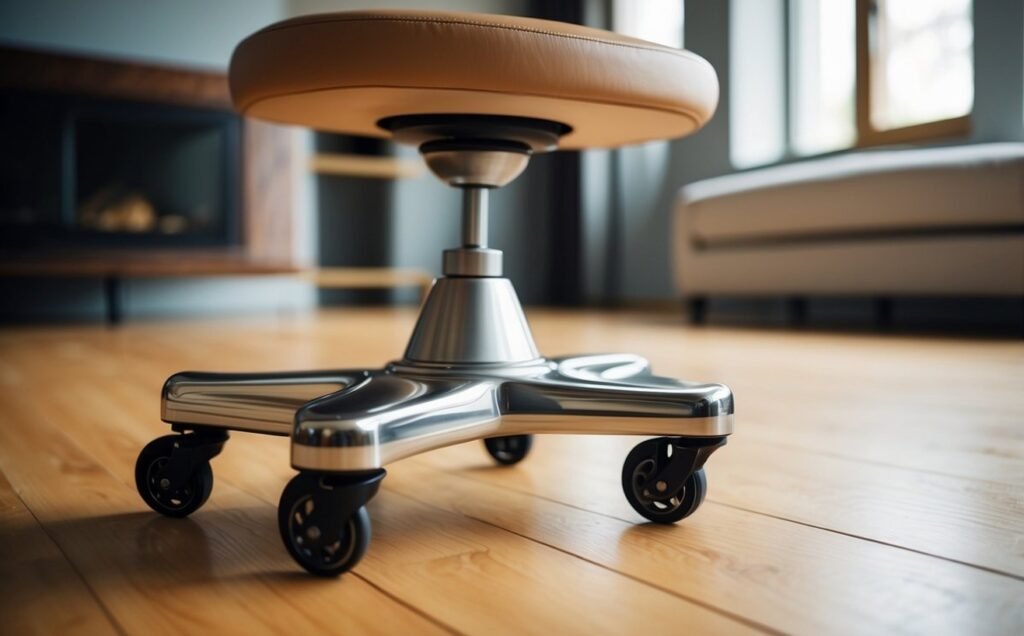
Hard vs. Soft furniture castors: Fight Club Edition
- Hard nylon wheels (such as Goodech HG series)
Laboratory test: can withstand extreme temperatures of -40℃~120℃
Standard for storage shelves, with a load capacity of 500kg/piece
Disadvantages: Noise on cement floors exceeds 65 decibels - Soft TPU wheels (such as Goodech SilentPro)
Hospital-grade silence, rolling noise ≤35 decibels
Friendly to wooden floors, but prone to deformation under continuous high temperatures
Typical applications: piano casters, high-end office furniture
Size Matters: Bigger Isn’t Always Better
After 500 simulations, the Goodich engineering team conducted an in-depth study of the impact of size selection on cart performance in different environments. The results revealed some important rules that help us make more informed decisions in practical applications.
First, in an office environment, the optimal wheel size was determined to be 2 to 3 inches. This size not only ensures the flexibility and stability of the cart, but also achieves a pass rate of up to 92%. This means that in daily office work, choosing the right wheel size can significantly improve work efficiency and reduce time wasted due to jamming.
Secondly, for industrial environments, especially heavy-load scenarios, wheel sizes above 5 inches show significant advantages. Studies have shown that furniture castors of this size can reduce the breakage rate by 67%. Under high-intensity working conditions, using larger wheels not only improves durability, but also improves safety and reduces potential accident risks.
Finally, for a special case, an automobile manufacturer used 8-inch furniture castors in the cart, and the results showed that the cart’s labor-saving effect increased by 41%. This finding highlights that in specific application scenarios, the right size selection can bring significant efficiency improvements, helping workers to more easily complete heavy load transportation.
In summary, the research of the Goodech engineering team provides us with valuable guidance on the selection of wheel size for carts. The best practices in different environments can help companies improve production efficiency, reduce operating costs, and ensure work safety.
Caster Selection Guide
1.5 Inch Office Chair furniture moving wheels
2 Inch PP Nylon small caster wheels for furniture
2-Inch black cabinet casters coffee table heavy duty furniture casters
Factory 50mm Swivel With Brake Office Chair castors for furniture
Factory Price Furniture Office Chair Pu furniture wheel
Factory price plastic 2 inch twin furniture caster wheels
Factory Wholesale Furniture Wheels Nylon Casters
Locking industrial swivel top plate furniture caster wheel
Traditional screw fixing vs Goodech QuickLock system
In modern logistics and display equipment, the selection and installation efficiency of casters are crucial. Goodech’s QuickLock system has brought revolutionary changes to the industry, significantly improving the convenience of installation and replacement.
Installation time
Traditional screw fixing: It takes about 15 minutes to install a caster, and the cumbersome steps and tool use increase the time cost.
Goodech QuickLock system: It takes only 20 seconds to complete the installation, which greatly shortens the operation time and improves work efficiency.
Replacement cost
Traditional method: Due to the complex installation, labor costs and maintenance costs are high.
QuickLock system: The replacement cost is reduced by 70%, making daily maintenance easy and economical.
12 must-know practical tips
Locking device selection
Directional lock vs full lock: For medical carts, it is recommended to choose a full lock device to provide higher safety and stability to prevent accidental sliding.
Installation angle
Optimal tilt angle: According to Goodech’s patented design, the optimal installation tilt angle is 8-10° to ensure the stability and controllability of the cart when moving.
Maintenance cycle
Oil filling frequency: In industrial environments, it is recommended to oil the casters every 2,000 kilometers to keep the casters running smoothly and extend their service life.
Mix and match strategy
Front and rear wheel combination: The combination of hard front wheels and soft rear wheels can improve the flexibility and load-bearing capacity of the cart and adapt to the needs of different ground surfaces.
Anti-entanglement design
Necessary function for hospitals: Choosing casters with anti-entanglement design can effectively avoid the entanglement problem of medical equipment during use and improve safety.

Color management
Load-bearing grade color separation: Use color management to distinguish the load-bearing grade, for example, red represents a load of more than 300kg, which is convenient for quickly identifying the applicable casters.
Certification mark
EN12530 standard: When purchasing casters, be sure to check whether they meet the EN12530 standard to ensure product quality and safety.
Shock absorption system
Buffer layer difference: There is a significant difference in the shock absorption effect between 3-layer buffer and 5-layer buffer. Choosing a suitable buffer system can effectively reduce vibration and improve operating comfort.
Anti-static treatment
Electronic workshop rigid demand: In the electronic manufacturing environment, anti-static treatment of casters is essential, which can effectively prevent static electricity from damaging the equipment.
Temperature adaptation
Extreme environment application: Choose models suitable for extreme temperatures, such as the -60℃ casters specially used by the Arctic expedition team, to ensure reliability in harsh environments.
Cleaning tips
Edible-grade silicone oil maintenance method: Use edible-grade silicone oil for maintenance, which can effectively clean and lubricate the casters while ensuring safety.

Get quick quote
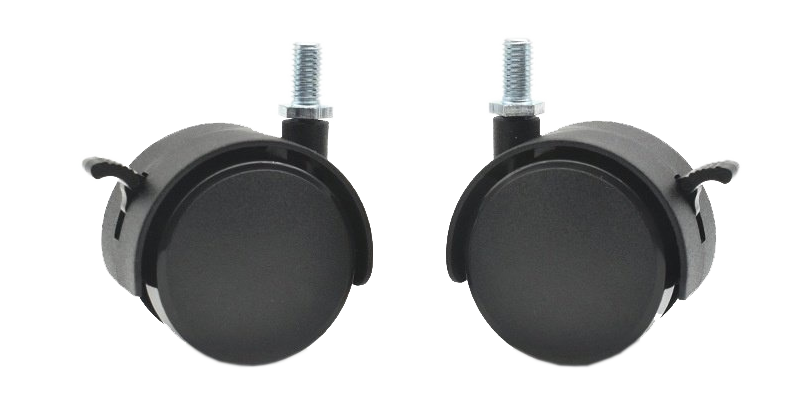


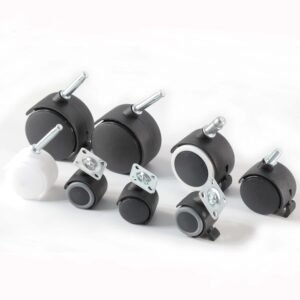
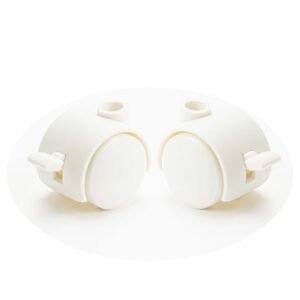
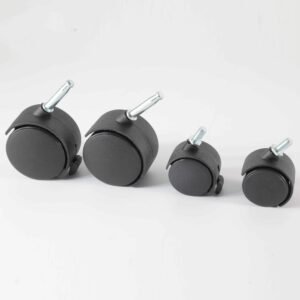
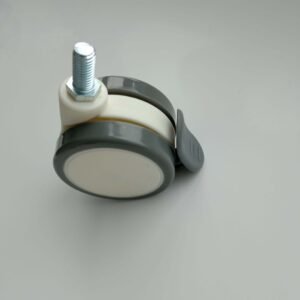
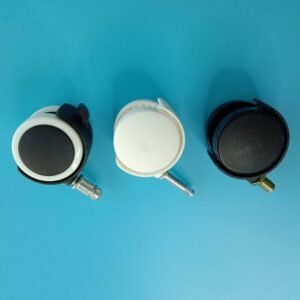
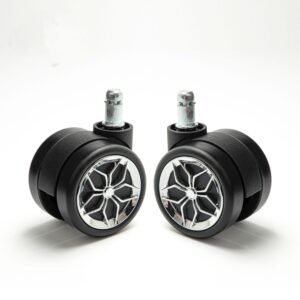
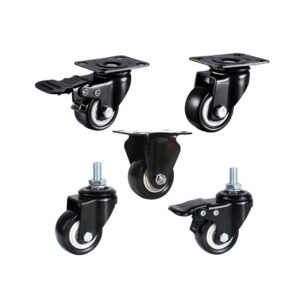
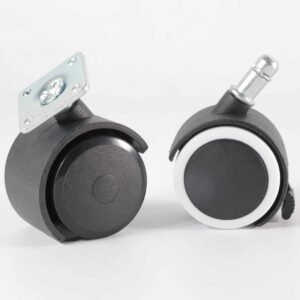
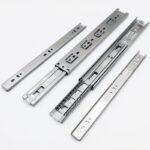

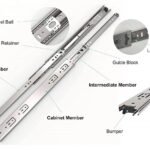
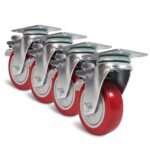
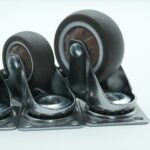
Leave a Reply